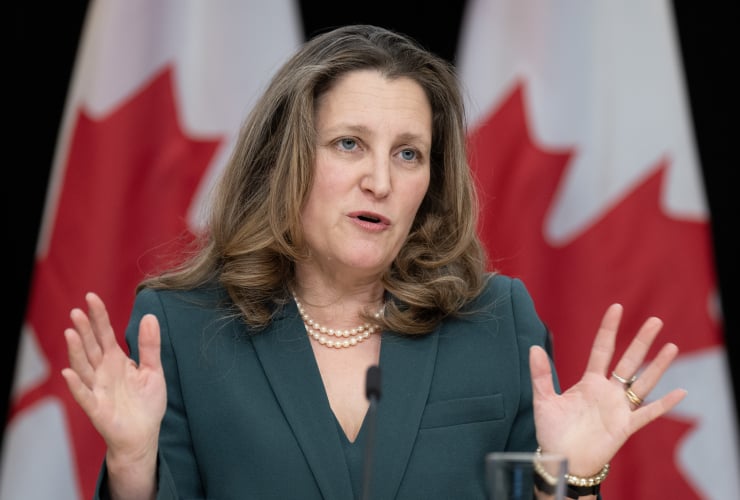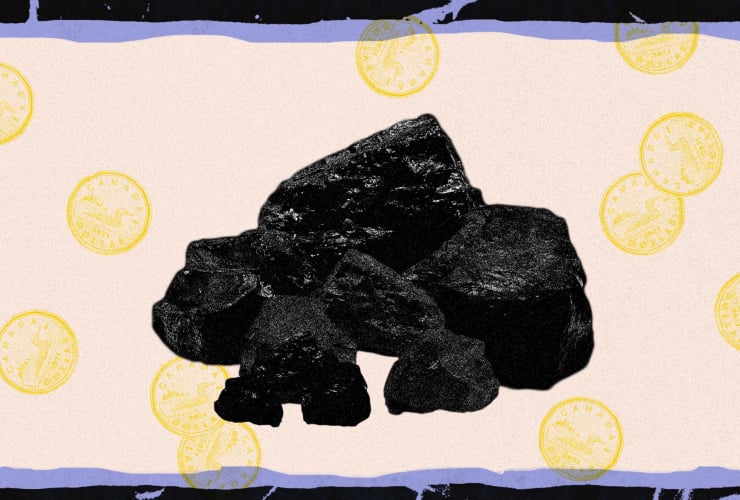Alberta’s UCP government may like to pretend it sees the world differently than Saudi Arabia but when it comes to their biggest industry, they speak the same language. Both have said the International Energy Agency’s predictions about the imminent arrival of peak oil demand are massively overblown and that consumption will remain strong for decades to come. That’s why the kingdom’s recent announcement to abandon plans to increase its maximum sustained production capacity should have gotten Danielle Smith’s attention. The explanation that Energy Minister Prince Abdulaziz bin Salman offered at a recent industry conference, meanwhile, should have stopped her cold.
“I think we postponed the investment simply because … we’re transitioning,” bin Salman said. “And transitioning means that even our oil company, which used to be an oil company, became a hydrocarbon company. Now it’s becoming an energy company.” They might not ring a bell at the top of a market, as the saying goes, but his statement is about as close as it’s going to get for fossil fuels.
So far, Smith has refused to reckon with this reality. In a world where global demand for oil is in the process of starting to roll over, she actually seems to think Alberta can double its production by 2050. As she told Tucker Carlson (during his brief stopover in Alberta en route to his date with Vladimir Putin in Moscow), “I think we should just double down and decide we’re going to double our oil and gas production because truly, where else does America want to get its oil from?”
She tried to play this card again during her recent visit to the United States, where she met with some of the most notoriously retrograde Republican senators in an apparent attempt to drum up business for Alberta. “Serious question for America,” she posed on Twitter. “Would you rather get your energy from Iran and Venezuela or your friends in Canada?” Here’s one serious answer: America currently imports almost no oil from Venezuela and has only registered imports from Iran in six months over the last 32 years. There is, in other words, almost nothing for Canada to replace here.
This wasn’t the only aspect of America’s energy system she doesn’t seem to understand. In a video posted to social media, Smith suggests the United States is actually behind Canada when it comes to climate policy, and we should avoid getting too far ahead. “I know that there are often proposals for what decarbonizing might look like on a number of fronts,” she said, “but I’m not seeing that America is moving as quick as Canada. That’s one thing I’m hoping we can bring in sync.”
That might have been true back in 2020 or so, but in the years since Donald Trump begrudgingly left office, the Americans have surged past Canada and most of the rest of the world. In 2021, the Biden administration announced a net-zero electricity target by 2035, the same one that Smith has said time and time again is simply impossible for her province to reach. And while Canada has committed to a 40 per cent reduction from 2005 levels in greenhouse gas emissions by 2030, the United States is aiming for 50 to 52 per cent.
The Inflation Reduction Act (IRA), which was passed in 2022, is already doing the heavy lifting there. In a recent report, Macquarie Investments described the IRA as the “most ambitious piece of climate legislation in the history of the United States” and noted that it has already fundamentally rewritten the economics of renewable energy and triggered a massive surge of new investment in it. “In the 12 months after the IRA was passed, its provisions — including investment and production tax credits — resulted in more than $US110 billion in new investment in clean technology manufacturing alone,” it noted.
Maybe Smith’s biggest misunderstanding of all is her continued belief that net-zero targets are somehow compatible with growing Alberta’s oil production and exports. If the United States was to reach its net-zero climate targets by 2050, that would eliminate upwards of 10 million barrels per day of oil demand and require far, far fewer barrels of Canadian supply. Even under global energy analyst Wood Mackenzie’s less ambitious “base case,” U.S. demand will still drop by seven million barrels per day by 2050.
All of this isn’t just writing on the wall. It’s a message painted in bright red graffiti that says the world is going in a different direction. After all, if Saudi Arabia — a petro-dictatorship with immediate access to tidewater and some of the cheapest and most easily accessible oil on Earth — isn’t trying to grow its production, what makes Smith think Alberta has any business trying?
Then again, this is the same person who claims hydrogen is going to be the passenger vehicle fuel of the future right as Shell is closing all its pumping stations in California. When it comes to climate and energy, she seems determined to serve as a reverse bellwether, pointing her province away from where things are actually headed. In time, that will be obvious to all but the most blinkered partisans. By then, though, the race to reach net zero will be lost. Maybe that’s been her goal all along.
It has always been pretty
It has always been pretty clear Danielle Smith works for and is a plant for the oil & gas industry in Alberta. If any Albertans actually believe she is there for them, they will get a rude awakening one day once they see how they have been taken for a ride by the UCP.
Fawcett: "The Inflation
Fawcett: "The Inflation Reduction Act (IRA), which was passed in 2022, is already doing the heavy lifting there."
As America's oil demand goes, so goes Alberta oilsands production. Canada exports four fifths of its crude oil production to the USA.
Under the IRA, renewable power (solar and wind) and electrification of heating will advance far faster than electric vehicles and electrification of transportation. The prospects for public transit in America's sprawled cities are even less hopeful than in Canada. Americans love to fly, and there are few options to replace jet fuel.
Coal and natural gas demand will fall first. Unfortunately, I see nothing on the horizon to reduce America's voracious oil demand any time soon.
With U.S. oil demand undiminished for decades to come, Alberta oilsands production is likely to continue at close to current levels. Which leaves the industry little room to grow. Which leads to a decline in investment. Investors looking to grow their capital will look elsewhere.
Oilsands production will become increasingly concentrated as high-cost producers and production fall away. Both the Alberta government and Ottawa will prop up the oilsands industry with increasing subsidies, for fake climate solutions to buy social licence as well as cleanup and reclamation.
I hope I am wrong.
When one reads news and
When one reads news and reports on the US IRA policy and sees the reported effects in barely 20 months, one can conclude that oil demand will decrease as the largest lithium deposits in the world are exploited. Those two newly discovered deposits are in Nevada and California, and they will be used heavily by American interests to keep jobs and industry at home, not just as climate policy but also to strengthen US policy against China.
International car makers are flocking to the US to build EVs and battery plants, VW is the latest, and it cited its upcoming Canadian battery plant as the prime supplier though at least one more will be built in the US.
There is every possibility that Alberta's oil will be incrementally but substantially eroded as US EV and North American battery production hits their stride.
Americans love to drive cars more than fly. Tesla literally has a cult following and it has at least two more gigafactories in the works in the US and Mexico, which along with Canada is a full trading partner.
My hope is that Canadian cities benefit from wise leadership and bring our car dependent suburbs into the realm of walkable, transit-oriented and fully electrified communities. But that will take a generation or two.
I hope you are right.
I hope you are right.
The average passenger car age is around 12 years in the U.S.. The slow turnover of the vehicle fleet implies a substantial number of ICE cars still on the road in the late 2030s and early 2040s.
If anything, jet fuel demand may increase. Global shipping will also depend on fossil fuels (LNG instead of oil).
Meanwhile, Canada's O&G industry will seek markets further abroad to shore up demand. Perhaps, cheap Chinese EVs will flood the Asian market — extinguishing dreams of higher prices for Canadian crude overseas.
But Canada's O&G giants will not give up easily.
Cheap Chinese EVs -- not to
Cheap Chinese EVs -- not to mention solar panels and other electronics -- flooded the Chinese market already to the point legacy ICE car makers are facing collapse there. And now they are starting to enter the West. Australia and the EU are already experiencing the affordable flood and they are loving them.
In addition, Chinese made CATL and BYD batteries are in the vast majority of EVs out there, not just in quanitity but in quality, and their chemistry is changing to more stable LFP with an attendant double digit reduction in prices. VW, LG, Stellantis and others have some catching up to do with advanced tech; it won't be long before sodium and silicon appear on the scene -- Chinese batteries are already on that road -- with excellent cold weather performance, longer ranges and higher energy density.
Batteries seem to be the icing for the advent of mass disruption of the fossil fuel industry mainly through better perfotmance and equal or lower prices.
Disruptive tech was outined by Tony Seba and ReThink X years ago, and his analysts seemed to have gotten the calculations right. Their latest analysis focuses on batteries and their impact on the grid, and they nailed it down to a turning point somewhere around 2027.
Danielle Smith seems to be oblivious of all non-carbon R&D and progress.
I hope ReThink et al are right. Meanwhile, some of us will continue to enjoy the convenience of walkable neighbourhoods and hope that all levels of government pull together to improve Canada's urbanism by subsidizing transit and electrification a lot more.
Agreed, it's most likely that
Agreed, it's most likely that the demand for coal and gas will diminish before gasoline and diesel fuel. But all around the world personal transport is electrifying mainly because of long term cost savings on family budgets, the convenience of charging at home and work, and from the catalyst of public policy to fight climate and air pollution and subsidize EVs along with heat pumps and solar panels.






Comments